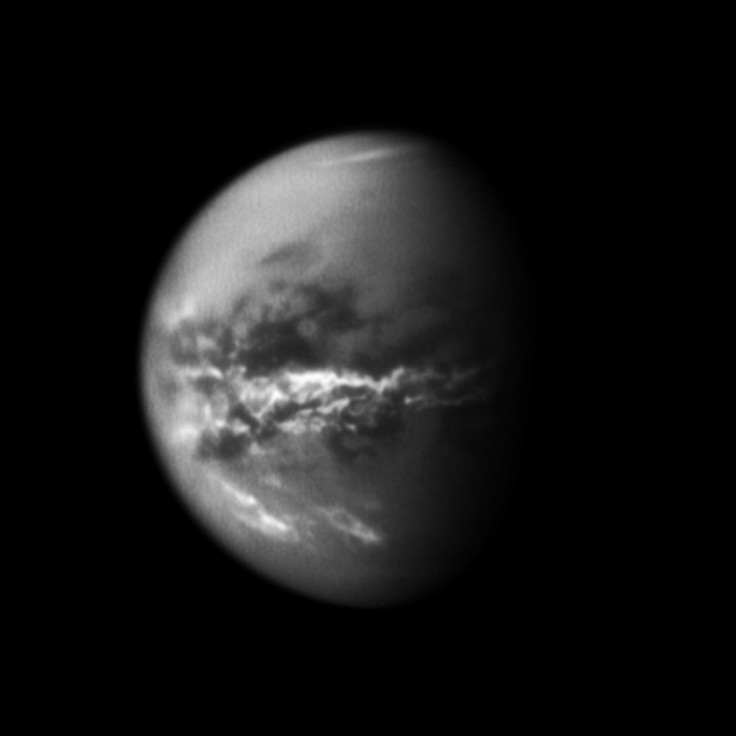Cassini Discovers Methane Rainstorms On Titan

Rainy seasons aren't just a regular occurrence on Earth - they also happen on Titan, the largest moon of Saturn.
The rain isn't water, it's methane. And the seasons are years long, as Titan takes two weeks to go around Saturn and Saturn takes 29 years to complete one circuit of the Sun.
Recent images from the Cassini probe, which is currently orbiting Saturn, show clouds forming in Titan's atmosphere and evidence that liquid methane is soaking the surface.
Alfred McEwen, a planetary scientist at the University of Arizona in Tucson, said the Cassini team had been observing clouds at the poles of Titan. Much of Titan's atmosphere is nitrogen, and it is cold enough at -180 degrees C (-292 degrees F) that methane would be a liquid. The atmospheric pressure is somewhat higher than it would be on Earth, and the combination is such that methane could evaporate and rain down like water.
However, it wasn't certain that would be the case. When the first Cassini images came back, Titan seemed to be covered with dunes. Any liquid raining on them would disrupt them if it happened often. At the same time there were channels on the surface that looked like a liquid had cut them. But the only place anyone had seen liquids was in the polar regions, pooled at the surface.
The Saturn system passed the equinox, when the sun lies directly over a planet's equator and seasons change, in August 2009. Previous Cassini observations suggest Titan's global atmospheric circulation pattern responds to changes in solar illumination.
McEwan says the atmospheric models predicted that there would be clouds in the equatorial regions at this time of year, as the sun on Titan got warmer. We saw these clouds suddenly, and then we saw the equatorial area darken, he said.
Scientists suspected that clouds might appear at Titan's equatorial latitudes as spring in the northern hemisphere progressed. An arrow-shaped storm appeared in the equatorial regions on Sept. 27, and a broad band of clouds appeared the next month.
The darkening was evidence that something about the surface had changed. At the wavelength the pictures were taken at, the methane shows brightly, and Cassini observed the clouds rising and moving towards the poles. McEwan says the likely explanation is that the clouds, as they rose, lost some of their capacity to hold moisture, which in this case would be liquid methane, and the methane precipitated out. At first some thought the surface might be flooded with liquid methane, but that didn't make any sense, McEwan says, because the higher areas were darker as well.
Over the next few months, Cassini captured short-lived surface changes visible in images of Titan's surface. A 193,000-square-mile (500,000-square-kilometer) region along the southern boundary of Titan's Belet dune field, as well as smaller areas nearby, had become darker.
The observations suggest that recent weather on Titan is similar to that over Earth's tropics. In tropical regions moisture rises as the sun heats the surface, and it precipitates out as rain, which is why rain forests tend to occur in those latitudes.
These outbreaks may be the Titan equivalent of what creates Earth's tropical rainforest climates, even though the delayed reaction to the change of seasons and the apparently sudden shift is more reminiscent of Earth's behavior over the tropical oceans than over tropical land areas, said Tony Del Genio of NASA's Goddard Institute for Space Studies, New York, a co-author and a member of the Cassini imaging team, in a statement.
© Copyright IBTimes 2025. All rights reserved.





















